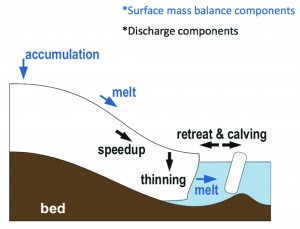Guest post by Kelly Levin, WRI; Paul Higgins, AMS; Brian Helmuth, University of South Carolina; and Andy Dessler, Texas A&M
Scientists have made massive progress in understanding the climate system and how human activities are altering it. Despite that progress, decision makers continue to struggle with climate change risk management.
RealClimate and other initiatives have shown that new media can be effective in enhancing communication of climate science. The speed by which new information can be transmitted has increased significantly, and new media has provided new learning opportunities, including discussion, debate, and links to further information.
This month, WRI, supported by google.org, launched a pilot project to further build the capacity of the scientific community to more effectively relay their recent scientific findings. The project stemmed from the Google Science Communication Fellow program, which aims to foster more accessible, open, and transparent scientific dialogue.
The project assesses whether video can be a compelling way for a scientist to describe his/her discoveries and, if so, which type of video works best. Imagine video being embedded one day into journal websites and Google scholar, not only offering the option of downloading a recent publication but also a video associated with the publication. Imagine videos sitting alongside newspaper and magazine articles, where you can hear about findings directly from the scientist in his or her own words. Like RealClimate, the project aims to connect viewers to the scientists themselves.
This project has the potential to improve scientific communication and enhance the public understanding of science. Ultimately, if done right scientific communication can help shape the public debate and lead to more informed decisions. That’s critical because societal decisions have the greatest chance to benefit the public when they are grounded in the best available knowledge and understanding. We need RealClimate’s reader’s help.
Please assist us in identifying the most effective means for communicating the latest findings of climate science via video. Go to http://www.wri.org/communicating-climate-science to watch the three videos.
Three scientists (also Google Fellows) — Andy Dessler from Texas A&M University; Brian Helmuth from University of South Carolina; and Paul Higgins from the American Meteorological Society – participated, and the videos showcase one of their recent studies that is either in production or recently published:
Dessler’s paper (Science, Vol. 330., http://geotest.tamu.edu/userfiles/216/dessler10b.pdf) focused on quantifying the cloud feedback. Using the ENSO to study changing cloud patterns during climatic variability, he found that the feedback is likely positive, consistent with the feedback that climate models yield.
Helmuth’s paper (Ecology Letters, forthcoming) examined the impact of variations in water and aerial temperatures on predator-prey interactions between sea stars and mussels in the intertidal zone. He and his colleagues found that predation rates decreased during non-coincident interactions between the two temperature stressors. Their paper underscores the need for taking into account temporal fluctuations in environmental stress, which can be ignored in experiments and models.
Higgins focuses on his recent research (Journal of Climate, in press) to more fully quantify the potential range in the terrestrial carbon cycle response to climate warming. This research suggests that plants and soils could release large amounts of carbon dioxide as global climate warms. That would push GHG concentrations higher and lead to even more climate warming. This is important because we’ve been counting on plants and soils to soak up and store some of the carbon we’re releasing.
Three videos were produced for each of the abovementioned papers:
Which video do you think works best? Click here to cast your vote and tell us about why you think it is most effective. Your votes will inform any scaling up of this project in the future.

 Among the most important recent papers, in our view, is the one by
Among the most important recent papers, in our view, is the one by 